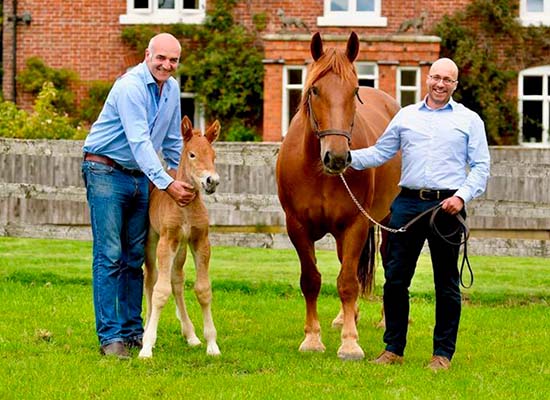By Sonja Egan PhD
Photography: Horse Power Creative
Recent widespread coverage of the birth of a Suffolk Punch filly garnered huge interest from both equestrian and non-equestrian media outlets. This was the first-time sexed semen was used to support reproduction in a rare equine breed. The birth of this filly carries quite some significance
The Suffolk Punch is recorded back as far as the 16th century and is one of Britain’s native work horses. The breed was preferential for turning clay due to their strength, stamina, temperament, and lack of feather. As we are all aware the onset of the industrial revolution caused widespread replacement of the work horse with machinery. Thus, the Suffolk Punch, alongside many other heavy breeds largely lost their working role on the farm. Tullis Matson, the Director of Stallion AI services in the UK, stated after the filly’s birth that there are only 70 to 80 Suffolk Punch mares in Britain and approximately 300 worldwide. These low numbers registered them as a critically endangered breed by the rare breeds survival trust. The Suffolk Punch Society and other rare breed societies have rejoiced at the potential for these advances in reproductive technology to preserve rare blood lines and accelerate equine genetics.
What is sexed semen?
Sexed semen is a method of artificial insemination wherein semen is specifically selected based on its X (female) or Y (male) chromosome-bearing spermatozoa1. Typically, sexed semen is selected via flow cytometry; this is a complex process which impacts sperm quality and overall concentration.2 Flow cytometry involves the use of a laser beam and specific dye which identifies different fluorescence exhibited between male and female spermatozoa. It is the most accurate and commercially applied method of semen sexing, where much of the literature points to almost 90% accuracy of the technique.3,4
As outlined by Peter Loom last month, sperm progressive motility is often used as a key indicator of sperm quality. The introduction of a ‘sex’ preference, by deduction, sets the chromosome as the primary indicator of selection. This is then followed by another threshold, such as motility, and therefore potentially impacting the quality of spermatozoa later used for fertilization. Larentis and Bastos (2020) outline equine reproduction parallels human reproduction more so than other domestic species, thus there have been many learnings from human reproductive medicine. Despite this, typically ‘human based’ IVF methods are often unsuccessful in horses.5.. To read the complete article you need to be a subscriber
CLICK HERE TO SUBSCRIBE TO BREEDING NEWS
SUBSCRIBERS CAN READ THE COMPLETE ARTICLE BY LOGGING IN AND RETURNING TO THIS PAGE




